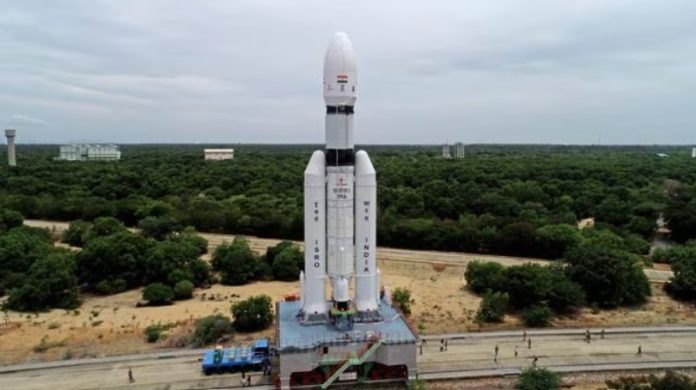
The Indian Space Research Organisation (ISRO) is gearing up for the highly anticipated Chandrayaan-3 mission, scheduled to take off from the Satish Dhawan Space Centre in Sriharikota, Andhra Pradesh, on July 14.
Aims and Objectives of Chandrayaan-3
Building upon the previous mission, Chandrayaan-2, the upcoming Chandrayaan-3 aims to demonstrate key capabilities, including reaching the moon’s orbit, making a soft landing on the lunar surface, and deploying a rover to study the moon’s terrain.
The Journey to the Moon
After the scheduled lift-off at 2.35 pm IST, approximately 16 minutes later, the propulsion module will separate from the rocket and begin its elliptical orbit around the Earth. This orbit will involve five to six cycles, with the closest distance to Earth at 170 km and the farthest at 36,500 km, gradually moving towards the lunar orbit.
Chandrayaan-3’s Lunar Arrival
ISRO scientists have tentatively set the goal of reaching the moon’s surface with a soft landing by August 23-24, positioning India among the elite nations to achieve this remarkable feat. The development of Chandrayaan-3 commenced in January 2020, with original plans for a launch in 2021. However, due to the COVID-19 pandemic, the project faced delays in its development process.
Legacy and History of Chandrayaan Missions
The Chandrayaan program was announced by the late Prime Minister Atal Bihari Vajpayee in 2003. Chandrayaan-1, launched in 2008 from the Satish Dhawan Space Centre, provided significant insights into the moon’s water molecules despite its crash near the lunar South Pole. In 2019, Chandrayaan-2 continued the exploration, with the Vikram Lander separating while orbiting the moon. Although communication with the lander was lost, the mission provided valuable data from its lunar polar orbit.
Also Read: Entrepreneur Umang Ratani’s Insights into Conquering the Business World.
Significance of Chandrayaan-3’s Payloads
Unlike its predecessor, Chandrayaan-3 features an essential payload within the Propulsion Module known as SHAPE (Spectro-polarimetry of HAbitable Planet Earth). SHAPE enables the study of Earth from the lunar orbit, focusing on spectro-polarimetric signatures in the near-infrared wavelength range. Additionally, the Propulsion Module carries the Lander Module, which is equipped with payloads such as RAMBHA-LP, measuring plasma ions and electron density near the lunar surface, ChaSTE for thermal property measurements, and ILSA to study seismic activity and the lunar crust and mantle structure.
Rover’s Role in Lunar Exploration
Following the soft landing, the rover will emerge from the lander module to explore the lunar surface. It will utilize the APXS (Alpha Particle X-Ray Spectrometer) payload to analyze the chemical composition and infer the mineralogical composition of the moon’s terrain. The rover’s mission life spans 14 Earth days (one lunar day) and includes another payload called LIBS (Laser Induced Breakdown Spectroscope) to determine the elemental composition of lunar soil and rocks near the landing site.
Chandrayaan-3 represents a significant milestone in India’s space exploration endeavors, aiming to expand our understanding of the moon’s surface and contribute to scientific advancements in lunar research.
Also Read: The Windmill Wizard, Igniting Hope through Invention and Perseverance.
